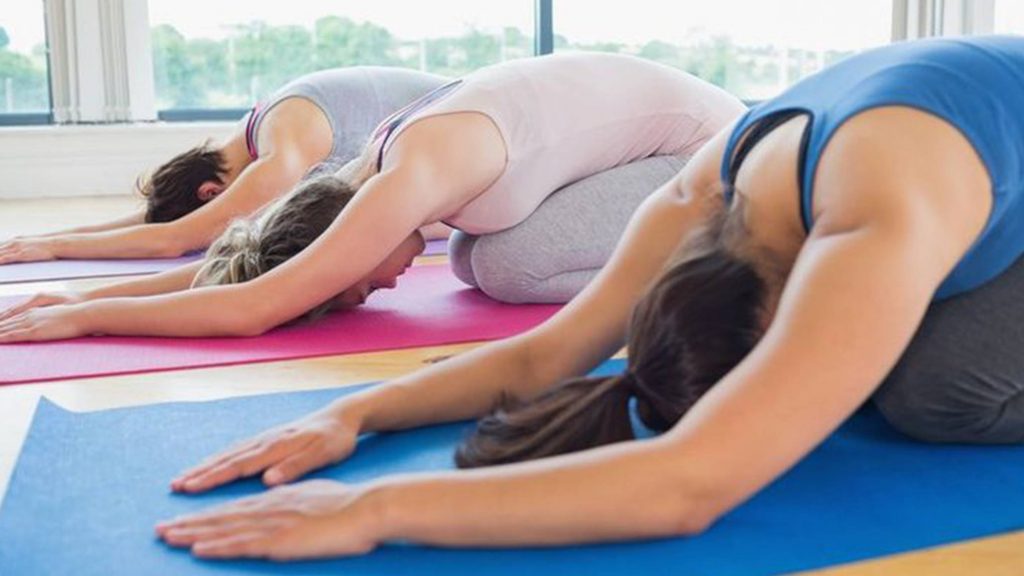Carrying some extra weight shouldn’t stop you from exercising with yoga. While you may experience some limitations, you can still benefit immensely from doing yoga asanas, and I’d like to give you some hints on how to optimize your practice. “Overweight” is a broad term, so just apply the suggestions that apply to you.
Poses that put a lot of pressure on the head or neck can be dangerous if not done properly, even at your optimal weight, so it makes sense to avoid these poses if you’re carrying extra pounds. For example, it would be unwise to do an inversion pose like Headstand or Shoulderstand.
Some poses can be hard on the wrists. In Toes & Palms Balance (also called Plank), all your body weight rests on your hands and feet. You can try it, but if you feel any sign of strain, lower your knees to the floor or come out of the pose altogether. As with all poses, listening to your body—and responding accordingly—is of paramount importance to avoid injury.
Many standing poses begin with your feet hip-distance apart. This may feel uncomfortable and can even make it hard to balance, so separate your feet until you feel steady.
In sitting or kneeling forward bends, simply separate your legs to make room for your belly. This works well in Baby Pose (Balasana) or in Sunset Stretch (Paschimottanasana).
If you are new to yoga asanas, I recommend practicing at home with a DVD or finding a hatha yoga class where each pose is held individually rather than moving quickly through a vinyasa sequence. My Easy DVD Series is suitable for beginners. Moving quickly can be challenging if you’re overweight, particularly if you don’t yet know the poses well. In a slower-paced class, you can take your time and feel what’s going on with your body as you move into, hold, and come out of the various poses, and you can make adjustments accordingly.
So here’s a summary:
- Avoid inversions that place extra pressure on the neck and shoulders
- Watch for any wrist strain in poses where your weight is on your hands
- Widen your stance until you feel steady in standing poses
- Separate your legs in forward bends
- Practice at home or choose a slow-paced class
- Listen to your body and respond accordingly.
Remember, this is an individual practice meant to improve your health and well-being, so be safe, don’t compete, and GENTLY stretch the boundaries of your limitations, wherever they are. We all have them. Above all, have fun!



